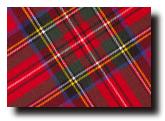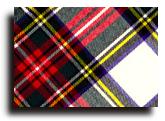
 The most famous "occupational" name in Scotland, the name is derived from the office of steward (from Old English "stig" meaning house and "weard" meaning keeper). A Norman knight, William Fitz Alain became hereditary Great Steward of Scotland during the reign of King David I and was given estates in Renfrewshire and East Lothian.. His descendants, using the name Stewart, obtained lands in Kintyre, Arran, Cowal and Bute. Other branches of the family became established in Strathearn and Atholl in Perthshire, Appin in Argyll and also in Strathspey.
The most famous "occupational" name in Scotland, the name is derived from the office of steward (from Old English "stig" meaning house and "weard" meaning keeper). A Norman knight, William Fitz Alain became hereditary Great Steward of Scotland during the reign of King David I and was given estates in Renfrewshire and East Lothian.. His descendants, using the name Stewart, obtained lands in Kintyre, Arran, Cowal and Bute. Other branches of the family became established in Strathearn and Atholl in Perthshire, Appin in Argyll and also in Strathspey.
Walter, the 6th High Steward married Marjory, daughter of Robert the Bruce. Bruce's own son, King David II died childless and Bruce's grandson, Robert Stewart, through Marjory, became King Robert II in 1371, thus starting the Stewart Dynasty which lasted until the death of Queen Anne in 1714. The royal male line of Stewarts probably ended with the death of Bonnie Prince Charlie (though illegitimate descendants continued to the 20th century). Currently, Prince Charles, the Prince of Wales, is High Steward of Scotland as the female-line descendant of Walter Fitz Alan.
The "Stuart" spelling arose because there was no letter "w" in the French language and Mary Queen of Scots, in particular, became Mary Stuart, following her marriage to the Dauphin of France, later King Francis II.
The Stewart clan motto is "Virescit vulnere virtus" which means "Courage grows strong at a wound".
Surnames regarded as septs (sub-branch) of the Stewart clan include Cook, Cruickshanks, Duilach, France, Francis, Garrow, Jameson, Jamieson, Lombard, Lorne, MacCamie, MacCloy, MacCombich, MacGlashan, MacKirdy, MacLae, MacLea, MacLeay, MacMichael, MacMunn, MacMutrie, Moodie, Munn, Sharp.
Stewart was the 7th most frequent surname at the General Register Office in 1995.



